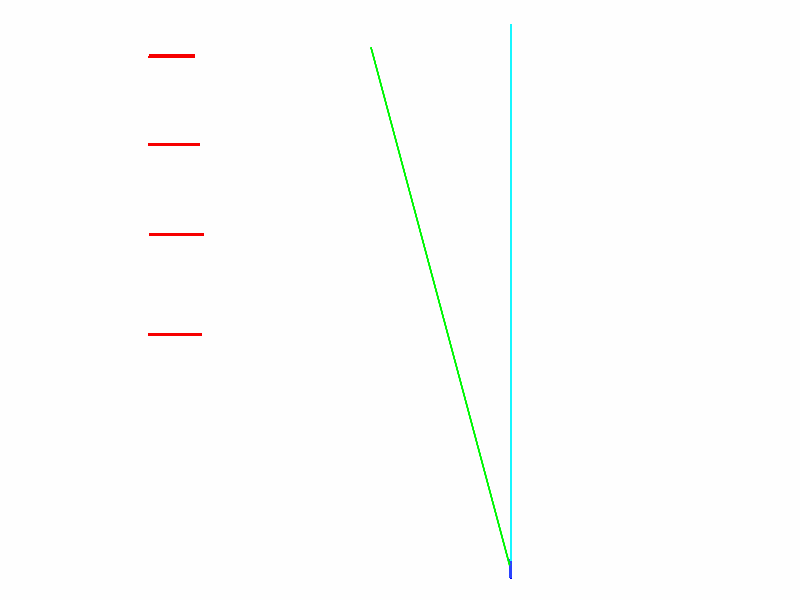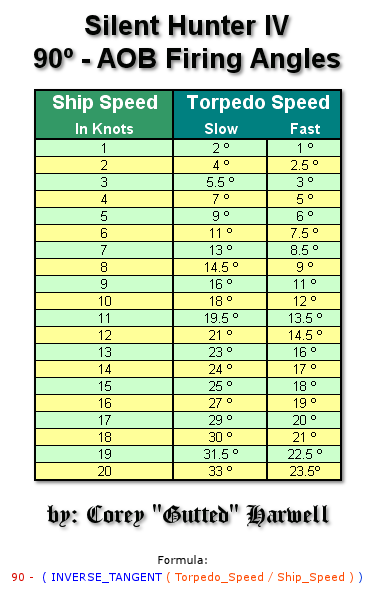Quote:
|
Originally Posted by Urge
Quote:
|
Originally Posted by aaronblood
If you're trying to use the simplified O'Kane 90° method...
When we talk about firing down a 0° torpedo track...
you'll need to setup a firing solution such that you'll be holding the aiming wire steady on about a 10° or 20° mark (depending on target speed) and then as points of interest pass the wire, you can fire and your torpedos should track a straight line to the target (0° gyro angle shot).
|
What, exactly, is the relationship between speed and the 10° to 20° advance you enter when inputting range? From watching Rockin Robins Dick O'kane tutorials I had the impression that it didn't matter. I have had both great success and frustrating failure using this method and haven't been sure why I missed when it seemed like a sure thing. But hey, I'm a noob and I probably screwed up. I have been using 20° for all firing solutions. Does range matter? I am trying to fire at 5-600yds. I am pulling the range indicator as far to the right as it will go (1241yds). |
A couple of pictures will be worth 1000 words. Why does the range not matter in a Dick O'Kane (fleet boat or U-Boat) or Fast-90 (U-Boat) attack?

The green line is your lead angle for a certain target speed. As long as you fire the torpedo as the target passes the line you WILL hit the target at any range. Here four targets get four separately fired torpedoes and they all hit. The correctness of aaronblood's and my statements is obvious and beyond question. See?
Now, how are the lead angles calculated? How can you pick an appropriate lead angle? In practice for anything 12 knots and above I use 20º and a slow target at an average 6 knots gets a 10º lead angle with fast settings on Mark 14s. Here's a chart by gutted calculating the perfect lead angle so the torpedo strikes a ship at a perfect right angle if your course is at right angles to the track and you fire with a zero gyro angle (the torpedo goes straight up the zero bearing to the target).

These angles are rounded to the nearest half degree. There is a problem here. American torpedoes have a very high dud ratio when striking at exactly 90º. It is actually useful to use a slightly different lead angle than the chart indicates and hit the target before or after he bears dead ahead. Let me explain. Our target is moving at 12 knots. The chart says fire the torp up the zero bearing and shoot at 14½º lead angle. But if we do that, the torpedo hits at a perfect right angle and might probably be a dud.
Let's enter the 12 knots into the TDC speed. Now we'll purposely pick a 20º sighting angle and press send range/bearing. The TDC figures out the lead angle from that and fires the torpedo up the 20-14½º or 5½º bearing. The torpedo strikes the target at 90-5½ =84½º and it is much more likely to explode. I could draw it out, but I hope that isn't necessary.
This should lay to rest any doubts you might have and let you understand why we dispense with the chart altogether and just ballpark our lead angles. The speed input into the TDC determines the course the torpedo takes anyway. Our lead angle only serves to let us input the correct AoB and aim with the crosshair for the exact part of the ship we wish to harm.